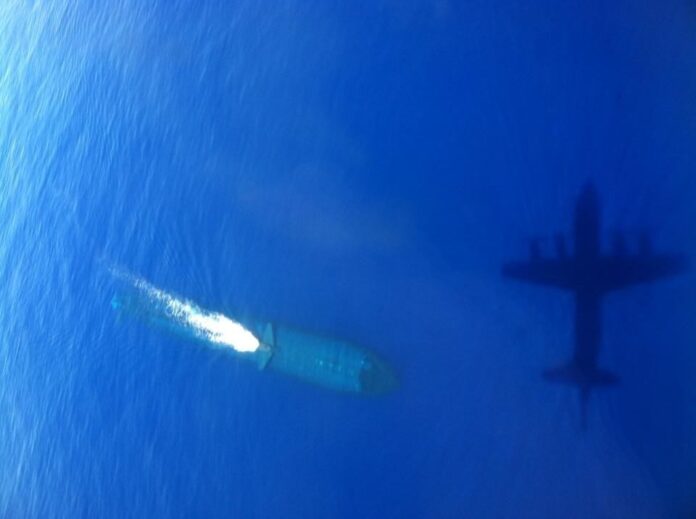Far above the ocean’s surface, aircraft hunt for an unseen enemy below the waves is extremely complex and difficult. Finding enemy submarines in a real-world situation is like “finding a needle in a haystack.” Anti-submarine missions can involve a lot of figuring out where an enemy is not and then closing in on the target, like playing the classic board game of Battleship, except, in this case, your opponent can see both sides of the board.
A Short History of Aircraft Use in ASW
In response to the big threat posed by enemy submarines in the First World War, which saw more than 5000 ships destroyed and 15,000 sailors lose their lives, the British Board of Invention and Research (BIR) came up with multiple counter-strategies.
Working “to initiate, investigate and advise generally upon proposals in respect to the application of science and engineering to naval warfare”, the BIR included top physicists such as William Bragg and Ernest Rutherford. Switching his focus during the war from radioactivity and atomic structure to underwater acoustics, Rutherford made significant contributions to improving the underwater detection of sound from submarines.
On the other hand, during the second world war some land-based planes became the first marine patrol aircraft (MPAs) and they have started aerial anti-submarine warfare (ASW) patrols. Since then, most MPAs have derived from civilian airliners as they can fly long distances, stay airborne for a long time and have lots of interior space for the crew and mission equipment.
Two early examples of converted-airliner MPAs were the RAF’s Nimrod (originally the de Havilland Comet), which was retired in 2010, and the US Navy’s still-active P-3 (originally the Lockheed Electra). The most recently developed MPA, the Boeing P-8A Poseidon, is based on the Boeing 737.

All these aircraft are designed to exploit the fact that submarines can be found using physics. During an ASW mission, an aircraft crew use an array of hi-tech sensors to find any trace left by a submarine.
Acoustic sensors look for sound pressure waves under the water, while electromagnetic sensors identify various parts of the electromagnetic spectrum. As for active sensors, they emit a shaped pulse of energy, or a ping, and collect any returning signal that has reflected off part of the submarine. Passive sensors, meanwhile “listen” to and collect any noise in the environment, which hopefully includes an emission from the target. Let’s check the details of these sensors used by aircraft to detect submarines.
Sonobuoys
Sonobuoys are cylindrical canisters dropped by parachute from an aircraft. They contain a hydrophone (special microphone) tuned to the water and a radio transceiver to send the information back to the aircraft. When it hits the water, the sonobuoy immediately deploys the hydrophone to a preset depth and erects a small floating antenna for a simple on-board radio to transmit the signal back to the aircraft. The range of sonobuoys and where they should be placed depends on the target and the local environment and is one of the most highly classified areas in ASW operations.
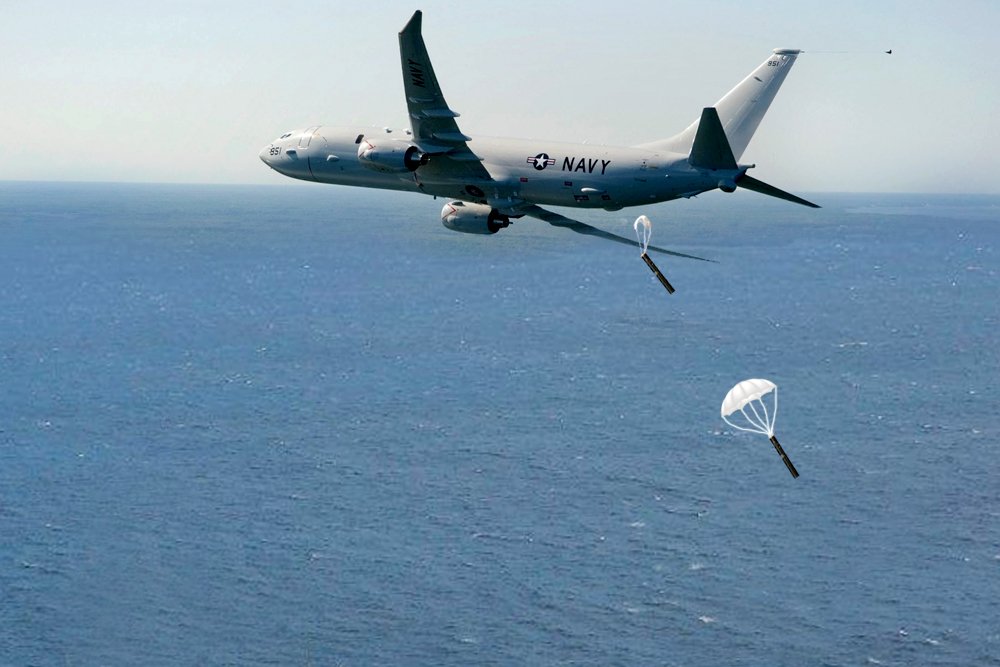
Sonobuoys come in two basic varieties: active and passive. The passive sonobuoy is a fairly simple, inexpensive hydrophone; its sole job is to gather all the acoustic energy in the water and convert it to a radio signal, which is transmitted back to a computer processor on the aircraft. The active sonobuoy (sonar), on the other hand, works like an underwater radar, but instead of radio waves, it transmits high-frequency sound waves (the pings) that can be remotely controlled by the crew.
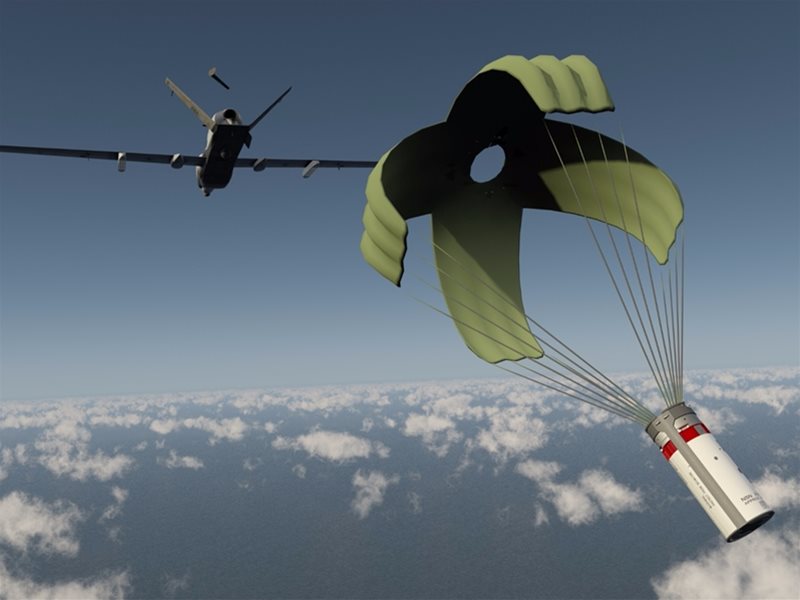
Submarines are very quiet today. A lot of Passive Sonobuoys’ detection ranges are extremely short (<100 m). Some submarines are coated with sound-absorbing material, therefore it is very hard to detect with active sonobuoys against this kind of submarines.
Magnetic anomaly detector (MAD)
A MAD instrument detects minute variations in the Earth’s magnetic field. A submerged submarine represents a mass of ferromagnetic material that creates a detectable disturbance in the Earth’s magnetic field. Military MAD equipment is a descendant of geomagnetic survey or aeromagnetic survey instruments used to search for minerals by detecting their disturbance of the normal earth-field. To reduce interference from electrical equipment or metal in the fuselage of the aircraft, the MAD sensor is placed at the end of a boom or on a towed aerodynamic device. Even so, the submarine must be very near the aircraft’s position and close to the sea surface for detection of the anomaly, because magnetic fields decrease as the inverse cube of distance. The size of the submarine, its hull composition and orientation, as well as the water depth and complexity of the natural magnetic field, determine the detection range.
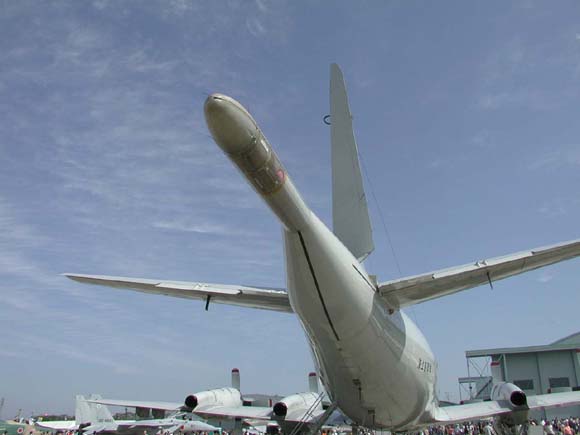
It requires requires aircraft to fly very low over the surface (increasing airframe fatigue and fuel consumption). Descending from cruising altitude also takes time. Equipment is large and heavy. For these reasons, a MAD boom is not included on the current USN P-8, the navy’s newest long range maritime patrol aircraft.
Counter-measures: Sub can dive deeper to reduce their chances of being detected. Typical SSN operating depths are 400 m. Navies are trying to reduce the magnetic signature by running currents through the hull and using non-magnetic hull materials. The Russians have built submarines out of non-magnetic titanium, and the new Swedish A26 class will be partially built out of carbon fibre reinforced vinyl that is non-magnetic (and 5x stronger than steel).
Radar
Radar can detect a submarine snorkel or periscope, and the wake it creates. Historically, more useful for detecting subs on the surface, forcing them to spend more time underwater, where they were less effective (slower, limited endurance, limited sensor range). For much of WWII, German U-boats were essentially submersible torpedo boats. Most of their attacks were actually made on the surface.
Today, our improved radars can detect submarine periscopes (and their wakes) at significant distances, forcing subs to take only very short glimpses. The periscope is actually quite useful for ID-ing targets and obtaining ranges and headings much more quickly than stalking with sonar alone.
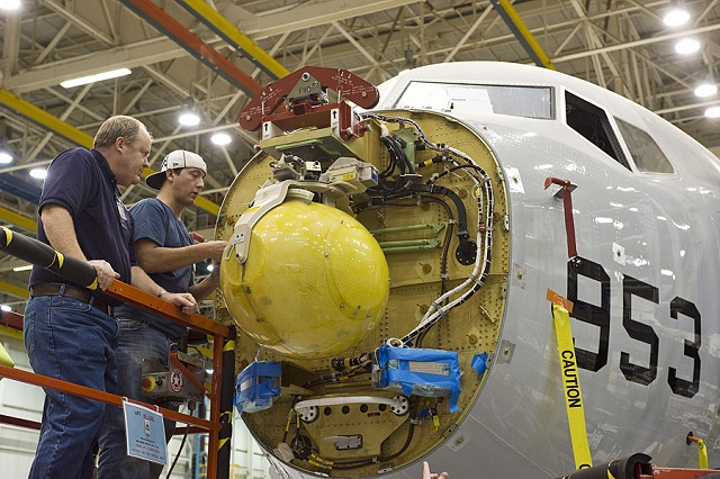
Radar technologies are developing faster than sonars. U.S. Navy is testing a new radar pod that can detect submarines.
The U.S. Navy, in a break with traditional submarine detection, is working to replace sonar and magnetic detection with radar. The AN/APS-154 Advanced Airborne Sensor (AAS) will spot the invisible wakes left by submarines underwater, telltale clues that something large is lurking beneath the waves. The AAS will be carried by the P-8 Poseidon aircraft, which can then engage submarines with air-dropped anti-submarine torpedoes.
According to Forbes, the downward-mounted pod features an advanced electronically scanning array (AESA) radar. Unlike traditional dish radars that use one large, powerful radar module, AESA radars use many smaller modules. These modules can collectively operate over multiple frequencies, which means they can overcome jamming or broaden or focus their field of detection, especially against small objects and those invisible to the human eye.
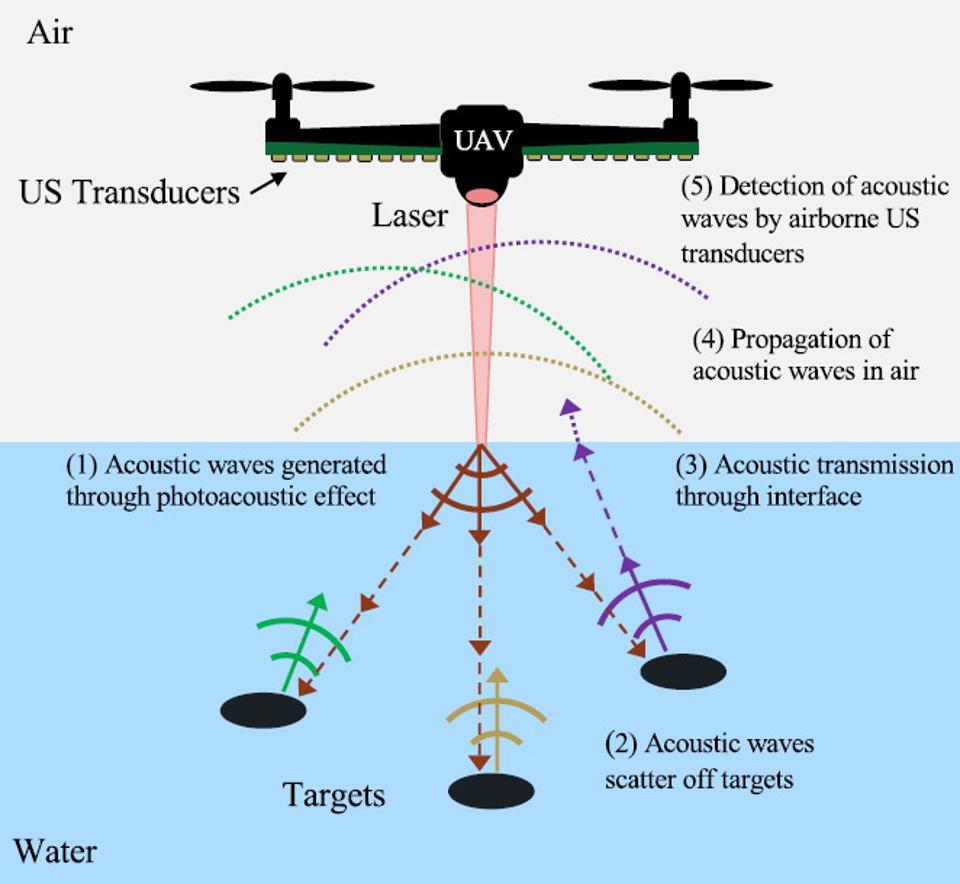
Signal intercept, ESM
You may detect a submarine communicating over radio. You may also detect a submarine if it uses its radar with ESM systems. A radio transmission, even though it only takes a split second to send, can be picked up and give the submarine’s bearing.
Visual
If you’re directly above a sub at shallow depth, you can see it. Needless to say, this is extremely rare, but is one reason operating in shallow, littoral waters is dangerous. If you’re lucky, you might spot a periscope wake. It’s also unlikely you’ll see a surface wake. At periscope depth, subs move very slowly. And at operating depths, surface wakes are extremely minute, likely undetectable even by radar and advanced processing, although attempts have been made.

EO/IR
A diesel-electric submarine without AIP (Air Independent Propulsion) has to raise the snorkel to run the diesels and charge the batteries. EO/IR systems can detect exhaust fumes or periscopes/wakes.
Other non-acoustic methods
- Chemical (e.g. hydrocarbon sensor) – to detect snorkelling subs recharging their batteries
- LIDAR – potentially faster than MAD. Limited depth and search band. Less effective in turbid coastal waters. Not used operationally.
- Radar to detect the minute thermals from warm water heated by reactors. (Claimed by Russians, not demonstrated by US.)
Check out Naval Library App to find out the specifications of the ASW Aircraft and Submarines.




